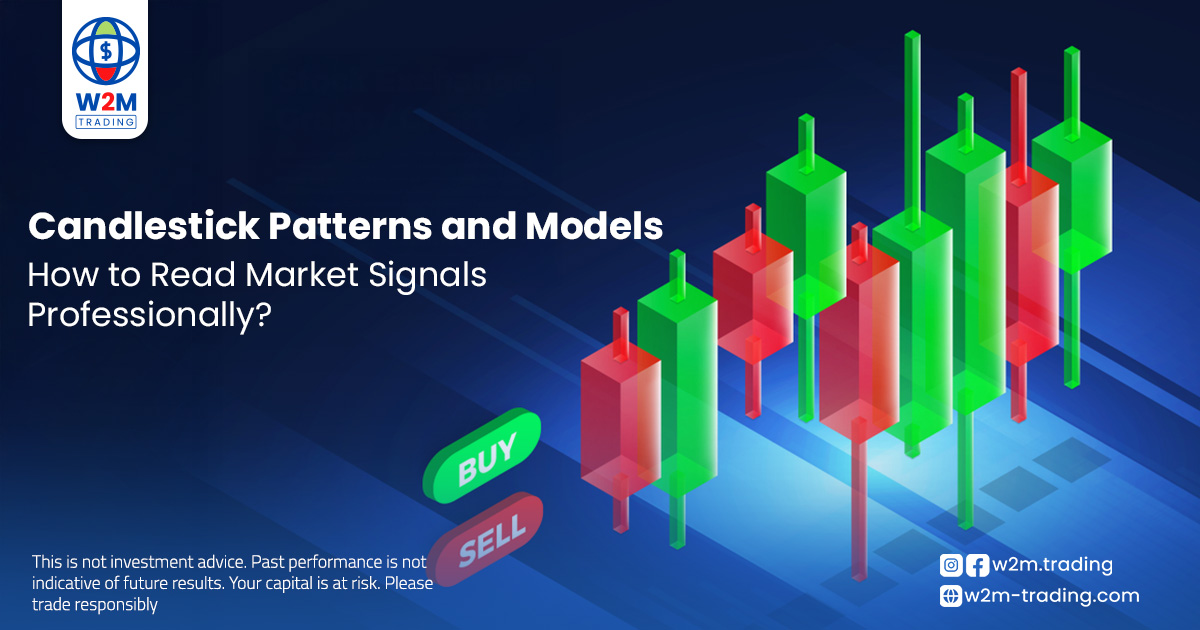- Attractive Education
- Beginner to Advance
- Flexible Timing

Japanese candlesticks are among the most widely used tools in technical analysis. They are a visual aid that helps traders assess market conditions and make informed trading decisions. Whether you’re a beginner in trading or have already started your journey, understanding Japanese candlestick patterns is a crucial step in analyzing market movements and predicting future trends.
In this article, we’ll explore the most common candlestick patterns and how to use them to spot trading opportunities.
A Japanese candlestick is a visual representation of price movement over a specific time period. It shows the opening price, highest price, lowest price, and closing price of that period. The candle is made up of a body and two wicks (or shadows). The body represents the distance between the open and close, while the wicks show the high and low of the session.
Candlesticks can be divided into two main types based on price movement:
Bullish Candle: When the closing price is higher than the opening price, the candle is usually green or white.
Bearish Candle: When the closing price is lower than the opening price, the candle is usually red or black.
There are many patterns that help traders interpret market behavior. Here are some of the most well-known:
This pattern occurs when the second candle is larger and completely engulfs the previous one, whether bullish or bearish.
If the second candle is bullish, it signals the start of an uptrend.
If it’s bearish, it signals a potential downtrend.
This is one of the strongest indicators of a potential market reversal. It occurs when the body is small and positioned at the top of the candle, while the lower wick is long.
After a downtrend, it suggests a potential bullish reversal.
After an uptrend, it may still indicate buying pressure if seen at support.
This pattern looks like the hammer but appears in an uptrend. It suggests a potential bearish reversal is near.
Bullish Engulfing: A large green candle engulfs a smaller red candle. Indicates a strong bullish reversal.
Bearish Engulfing: A large red candle engulfs a smaller green one. Signals a bearish reversal.
A doji candle forms when the opening and closing prices are nearly equal, showing market indecision. In volatile markets, a doji can signal a potential reversal in direction.
Learning candlestick patterns is a key step in enhancing your trading strategy. But remember, they are not definitive signals — they are indicators that can help guide your decisions.
Here are some tips for using candlesticks effectively:
Combine with Other Tools: Don’t rely solely on candlesticks. Combine them with other technical indicators like moving averages, support and resistance zones, or trendlines.
Check Multiple Timeframes: Always examine candlestick patterns across multiple timeframes to get a broader view of the market.
Look for Confluence: If a candlestick pattern aligns with the overall market trend, it’s often a stronger signal for potential continuation.
Understanding how candlesticks behave in different market conditions can greatly improve your decision-making:
In bullish markets: Patterns like bullish engulfing and hammer are strong indicators of trend continuation.
In bearish markets: Patterns like bearish engulfing and shooting star often signal potential reversals to the downside.
Japanese candlesticks are an essential part of daily trading strategies for many professional traders. These patterns help identify optimal entry and exit points.
The Engulfing pattern can be a strong buy or sell signal.
The Doji pattern might indicate hesitation or a potential turning point in the market.
Practice and Train: Every trader should consistently practice interpreting and analyzing candlestick patterns effectively.
Use Interactive Charting Platforms: Tools like TradingView can help you draw and analyze candlestick formations easily and efficiently.
This site is protected by reCAPTCHA and the Google
Privacy Policy and
Terms of Service apply.